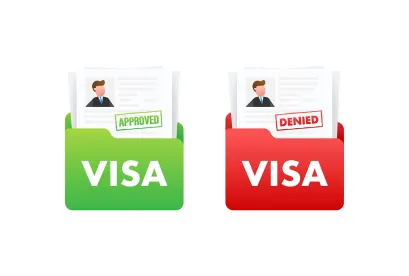Employers may find it useful to have an understanding of the H-1B, L-1A, and L-1B maximum periods of stay. As a reminder, H-1B status is granted for certain specialty occupations and fashion models, L-1A status is granted for intracompany transfers of executives and managers, and L-1B status is granted for intracompany transfers of employees with specialized knowledge. Understanding the relevant periods of stay helps employers to timely initiate an employment-based green card process on behalf of an employee. It also allows employers to proactively plan their immigration policies to ensure business continuity and to reduce costs.
Quick Hits
- H-1B, L-1A, and L-1B classifications have six-year, seven-year, and five-year maximum periods of stay respectively.
- The H-1B category provides options for extensions beyond the maximum period of stay, but the L-1 category does not.
- Employees must provide independent documentary evidence of departures from and reentry to the United States to request recapture of unused H-1B or L-1 time.
Overview
The H-1B, L-1A, and L-1B classifications have six-year, seven-year, and five-year maximum periods of stay in the United States, respectively. Any time an employee in L-1 status spends in the United States will count against available H-1B time if the employee were to change to H-1B status in the future, and vice versa. This maximum period of stay will not apply to employees who are employed in the United States in H-1B, L-1A, or L-1B status on an intermittent basis.
Before reaching the H-1B or L-1 maximum period of stay, an employer may request, in an extension filing, that any time an employee has spent outside of the United States be added back into the maximum period of stay for that employee. The recaptured time will recalculate and elongate an employee’s maximum period of stay.
The H-1B category allows for extensions beyond the six-year maximum period of stay if an employer is pursuing the employment-based green card process for an employee and it has taken certain steps on a timely basis. While the H-1B category provides options for extensions beyond the maximum period of stay, the L-1 category does not provide that same flexibility.\
Once individuals in L-1A or L-1B status reach their maximum periods of stay, they will not be eligible for L-1A or L-1B status again until they have spent one full year outside of the United States. This may also apply to the H-1B category if there are not options to extend beyond the six- year maximum period of stay. Further, if employment is cap-subject, an individual pursuing an H-1B will be required to go through the H-1B lottery again in order to obtain a new six-year maximum period of stay.
Recapture
To request recapture of unused H-1B or L-1 time, an employee must provide independent documentary evidence showing departures from and readmissions to the United States. Only full days (i.e., twenty-four hours) spent outside of the United States are eligible for recapture. Examples of such evidence include an employee’s official travel history from the U.S. Customs and Border Protection (CBP) website, I-94 cards, passport admission stamps, airline tickets or itineraries, frequent-flyer or traveler program documents with travel history, hotel records, and receipts from travel. Typically, individuals may submit a chart detailing the time they have spent outside of the United States to help facilitate the review process by the U.S. agency adjudicating the request. It may be helpful to educate employees on this topic before they travel so that they retain records to assist in a future request for the recapture of time.
H-1B Extensions Beyond the Six-Year Maximum
As mentioned above, the H-1B category provides for extensions beyond the six-year maximum if employers take certain steps in the employment-based green card process on a timely basis. The American Competitiveness in the Twenty-First Century Act of 2000, codified as 8 CFR Sections 214.2(h)(13)(iii)(D) and (E), provides two options for such extensions. In general,
- U.S. Citizenship and Immigration Services (USCIS) will provide H-1B extensions in one-year increments beyond the six-year limit if an employer has filed an Application for Permanent Employment Certification (PERM) with the U.S. Department of Labor (DOL) or an I-140 Immigrant Petition has been filed with the USCIS no later than an individual’s fifth year in H-1B status.
- Employers may request H-1B extensions in three-year increments once USCIS approves the I-140 Immigrant Petition and if the beneficiary of that process is subject to visa quota backlogs.
L-1 Concerns
The above flexibility is not available for the L-1 category. In general, employees in the L-1 category must secure employment authorization through the employment-based green card process prior to reaching the maximum period of stay in L-1 status to remain in the United States and employed without interruption. It is possible that some individuals may be eligible for an alternative visa type but employers may want to understand the path forward for these employees early on in the L-1 period of stay. Employers may want to keep in mind that due to the nuanced nature of the topic and the varying facts in each situation, a one-size-fits-all situation will likely not work.





 />i
/>i
